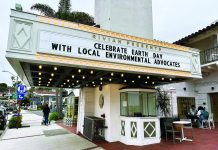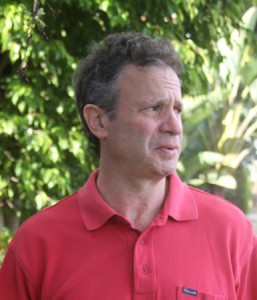
After months of campaigning, an unprecedented number of debates and less than two weeks before the election, the five City Council candidates held an on-point yet almost cozy eighth and final forum Tuesday sponsored by the Top of the World and Temple Hills neighborhood associations.
With the recent brush fire in the hills near Laguna Terrace Mobile Home Park started by a live electrical wire and nearing of the 20-year anniversary of the firestorm that forced a citywide evacuation, disaster preparedness was on residents’ minds, particularly concerning undergrounding utility poles.
To make the city safer, challengers Robert Whalen and Steve Dicterow said asking the responsible utility company to foot the bill to underground electrical poles was their priority rather than putting 100 percent of the costly burden on city residents.
“They’re the ones who are creating the safety problem and it would be a good idea that they help pay for it,” said Dicterow, a pension-plan lawyer and former council member, in response to Temple Hills resident Anne Frank’s concern about undergrounding utility poles on Thalia Street.
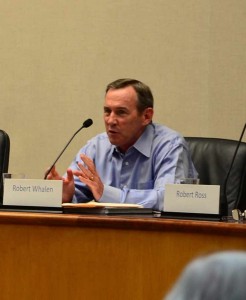
Whalen, a municipal finance attorney and current planning commissioner, said the cost of undergrounding poles must be prioritized based on their benefit to the entire city, starting with all utility poles surrounding Laguna Canyon Wilderness Park. Whelan suggested that state legislation holding power companies responsible for the cost would be worth pursuing.
“They could spread the cost across the entire rate-payer base,” he said, “which would be a lot less traumatic for Laguna Beach in trying to fund it 100%.”
Currently, residents shoulder most of the cost of undergrounding utilities in neighborhoods, though the city previously funded engineering studies for removing poles and evaluating neighborhood esthetics. The most recent project involved 33 properties on Allview Terrace and cost $680,000, ranging from $6,350 to $45,500 per household depending on how much improved views affected property values.
A plan with Southern California Edison to underground utility poles along Laguna Canyon Road at the Big Bend curve is already underway, according to Public Works Director Steve May. The entire canyon undergrounding project is estimated to cost $20 million and take several years to complete.
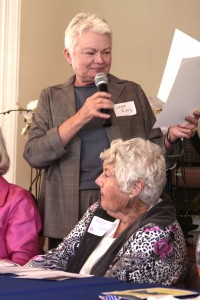
The city has been accumulating $95,000 annually from Edison for the last seven years, now totaling more than $780,000, to undertake undergrounding projects. Work at Big Bend is tentatively scheduled to begin in 2014 when Edison allotments would equal $1.5 million, which includes a five-year advance of $450,000, according to city reports.
Dicterow noted that times have changed with fire-fighting techniques. “The ‘93 fire did teach us a lot of lessons,” he said. “We had a little fire a few weeks ago and it was put out extremely quickly because more modern techniques are being used. If we were to have a cataclysmic event like we did in ’93, I don’t think it would become as cataclysmic. I think it would be shut down much quicker.”
Another type of disaster preparedness, involving the paucity of escape routes in their neighborhood, was also a concern expressed by some of the 40 residents attending the candidates’ question-and-answer forum.
Holding a tract map showing pathways in Temple Hills from the 1920s that are now overgrown, candidate Robert Ross suggested opening the trails for walking access down to Thalia Street. Candidates also supported a sidewalk the length of Temple Hills Drive, with Dicterow noting the inherent problem that steep streets tend to inspire speed.
“And not just for cars,” he said, “but other kinds of vehicles going too fast, too, like skateboards and bicycles.” Even “traffic-
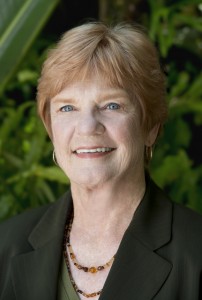
calming” measures such as stop signs are often counter-effective, he said, noting Nyes Place where stop signs on a steep grade are often difficult to obey. “The government,” Dicterow said, describing himself as a social libertarian who believes in individual freedom as long as it doesn’t interfere with other people’s rights, “can’t solve every problem.”
During a citywide emergency, Whalen suggested a three-fold plan of cordoning off one lane on main uphill streets for buses to bring down large numbers of residents, using the fire road connecting Arch Beach Heights and Top of the World and requesting access from the county for emergency exit through Aliso and Woods Canyon Wilderness Park. “There’s only so many ways down,” he said.
Candidate and current mayor Jane Egly said that community emergency response teams (CERT), comprised of residents familiar with their neighborhoods ready to assist emergency personnel, are already being trained with a new session beginning in November.
“This is an area where we need to do a lot more work,” contended candidate and current mayor pro tem Verna Rollinger. “We need to spend more time figuring out how people can get out of town and need to spend even more time figuring out how we’ll exist in this town in an emergency when we cannot leave.”
Making streets friendlier to walkers, bicyclers, skateboarders and runners as well as motorists, as mandated by the state Complete Streets law, was also a key topic. Gene Felder, from Top of the World, asked whether changing Glenneyre Street from two lanes in both directions to one lane in each direction with a third middle turn lane in order to accommodate bicyclers was a good idea.
“It absolutely defies logic to me to take the prime alternate to Coast Highway, particularly during the summer and weekends when it’s very crowded, and reduce it ultimately to essentially one lane in each direction with the middle a turning lane,” said Dicterow. “It defies logic to me that that could handle the same amount of volume.”
A recent report by Fehr and Peers, a transportation consulting firm specializing in pedestrian and bicycle pathways, said the configuration, which accommodates bike access on each side of Glenneyre Street and the possible addition of mini round-abouts rather than four-way-stop intersections, would handle the same volume of traffic as the current traffic lanes.
The City Council preferred to test the new traffic plan on Glenneyre from Thalia to Calliope streets and referred the proposal to the city’s Planning Commission for further study.
Egly, who initiated the city’s Complete Streets Task Force, said the plan is worth testing. “It’s an experiment but it’s not a stupid experiment,” she said, “and it’s not a not-thought-about experiment. I do know that people have trouble with round-abouts but we’re going to try it, I hope. I’m sure that if people here don’t like it, they’re going to let us know. Hang in there, it’s a coming attraction.”




